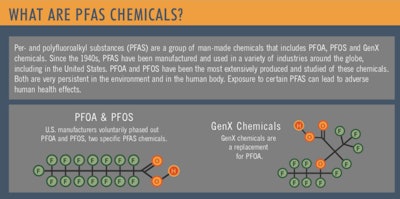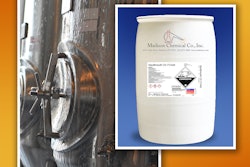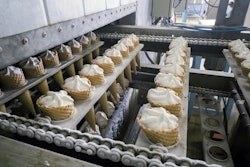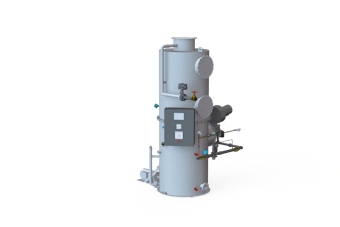
In light of recent media reports about Per- and Polyfluoroalkyl substances (PFAS) in the food supply chain and FDA's confirmation of that fact, here is general information from FDA. More resources can be found at the end of this article.
Per- and Polyfluoroalkyl substances (PFAS) are a family of human-made chemicals that are found in a wide range of products used by consumers and industry There are nearly 5,000 types of PFAS, some of which have been more widely used and studied than others. PFAS are impermeable to grease, water and oil. For this reason, beginning in the 1940’s, PFAS have been used for many different applications including in stain- and water-resistant fabrics and carpeting, cleaning products, paints and fire-fighting foams, as well as in limited, authorized uses in cookware and food packaging and processing (referred to as food contact substances).
The widespread use of PFAS and their ability to remain intact in the environment means that over time PFAS levels from past and current uses can result in increasing levels of contamination of ground water and soil. This same accumulation also can occur in humans. Importantly, there is scientific evidence showing that the bioaccumulation of certain PFAS may cause serious health conditions.
PFAS can occur in food primarily through environmental contamination, including contaminated water and soil used to grow the food. Typically, this type of contamination is limited to a geographic area near a specific facility. For example, a water well or farm near an industrial facility where PFAS were produced or used to manufacture other products, or an oil refinery, airfield, or other location at which PFAS were used for firefighting. PFAS can also come into contact with food as a result of the limited authorized uses as food contact substances.
FDA is working to better understand the potential dietary exposure to PFAS by:
- Assessing foods for PFAS through sampling:
- related to areas where there is a known environmental contamination,
- of the general food supply; and
- Reviewing the limited authorized uses of PFAS in food contact applications.
Measuring PFAS concentrations in food, estimating dietary exposure and determining the associated health effects is an emerging area of science. FDA scientists are at the forefront of developing new and more precise testing methods to measure PFAS concentrations in foods and we are working with states to build capacity for local testing laboratories. New data will help inform FDA efforts to identify and prioritize activities to reduce PFAS in human and animal food. To lead this effort, in 2019, the FDA formed an internal workgroup and is committed to engaging with consumers, industry and other federal, state, and local government partners in this process.
Resources:
Per and Polyfluoroalkyl Substances (PFAS)
Research on Per- and Polyfluoroalkyl Substances (PFAS)




















